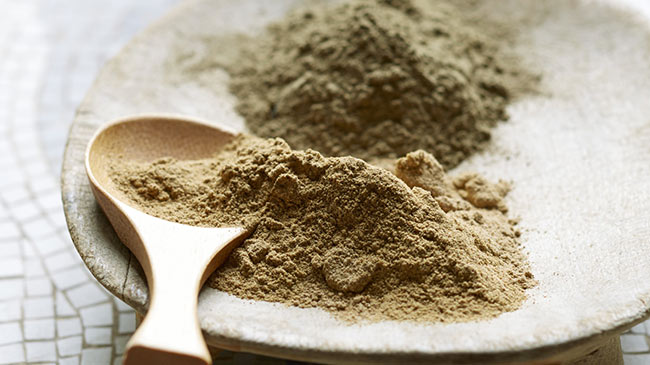I’m holed up in the bathroom right now, doing a quick deep conditioner, while baby girl is sleeping and daddy is entertaining the not so little peanut.
I write about rhassoul clay pretty much all the time. It’s the real MVP, an all around product that can be used as a facial cleanser, hair wash, deep conditioner, etc. I usually do a hair mask, but with two kids, applying the mask can take time. Making sure every strand is coated, letting it sit on my hair for a bit before proceeding with my routine. Now, I tend to do a rhassoul wash more than a hair mask, because it’s quicker and less messy, but mostly because it’s a short process. A rhassoul wash is my remplacement shampoo, so I always follow it up with a conditioner or deep conditioner, which isn’t always the case with the mask.
I thought I’d share my mixture for my wash. It differs a lot from the mask, because it’s mostly water and has more ACV. The goal with the wash is to cleanse the scalp. Although a minimal amount of rhassoul is used here, I still reap the benefits of soft, tangle free hair.
Rhassoul Quick Wash Recipe
- 3/4 – 1c water
- 2 TBSP ACV
- 3 TBSP rhassoul
Apply to wet hair, close to the scalp, massage scalp in circular motions with the pads of your fingers, rinse and you can detangle as you’re rinsing if you’d like.
I followed this with a reverse oil rinse deep conditioner, which I’m doing right now as I write you.
Side note- I’ve gone through post-partum shedding before, but it seems much more severe this round, because my hair wasn’t as thick this pregnancy. Well, I’ll carry on deep conditioning the three strands of hair this pregnancy has left me. =)
Have you ever tried rhassoul clay? If so, what are your favorite ways to use it?
I’ll have some exciting news towards the end of this year. I can’t really share it with you now, although I’m itching to, but there will be some big changes happening for lowporosityhaircare.
Happy weekend!
2nd day hair pic (selfie and nursing —being a mom has made me a pro multi tasker). Just to show my post partum thinning.






















